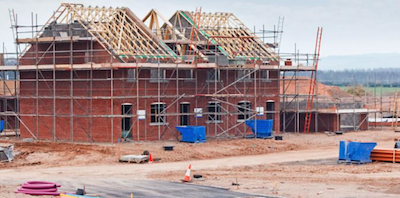Halifax said on Friday it expects UK house prices to fall next year by around 8% as rising interest rates push up mortgage costs and the cost of living crisis hits household finances.
“To put this into perspective, such a fall would place the average property price back at roughly the level it was in April 2021, reversing only some of the gains made during the pandemic,” said Andrew Asaam, homes director at Halifax.
“There is still uncertainty around this forecast, with the trajectory for Base Rate (now expected to peak at 4%) and unemployment levels key to determining any future changes.”
The prediction is contained in the Halifax UK housing market review and outlook for 2023.
The report said the UK housing market remained buoyant in the first half of 2022, but house prices flattened off from mid-year, and fell near the end of the year.
The review said the average UK house price is now £285,579 compared to £272,778 a year ago, a rise of £12,801.
It said the “typical” UK house price has increased by +71% over the last decade (£166,627 in November 2012), a rise of £118,953.
The North East of England saw the highest rate of annual property price inflation of any UK region or nation in the year to the end of November 2022 at +10.5%.
The South East of England recorded the biggest price increase, up by £28,068 over the last 12 months to the end of November.
London recorded the slowest rate of annual house price growth at +5.2% over the last year to the end of November, but at £549,160 it still has by far the most expensive average UK property price.
Asaam added: “It was a tale of two halves for the UK housing market in 2022.
“The year kicked off with average house prices continuing to rise at pace, still supported by low interest rates and strong demand from buyers. This meant the typical property had added more than £17,500 to its value by June.
“Following such rapid house price growth, and the growing economic headwinds, a slowdown was almost inevitable. We saw this play out with a flattening of house prices over the summer, before the -2.3% decrease recorded in November.
“It’s important to remember we saw some of the biggest house price increases the market has ever seen over the last few years. Between March 2020 and August 2022, the average house price increased by nearly £55,000 (23%) to £293,992, a new record high.
“As the increasing cost of living puts more pressure on household finances and rising interest rates impact customers’ monthly mortgage payments, there’s understandably now more caution among both buyers and sellers – particularly following recent market volatility – which has seen demand soften as people take stock.
“Looking ahead to next year, it will clearly be a more challenging economic environment and the housing market will continue to rebalance to reflect these new norms. Though the limited supply of properties for sale will continue to support prices, the pandemic-driven surge in demand has receded, and we’re emerging out of more than a decade of record low interest rates.
“Unemployment is expected to rise and reach around 5.5%. This is relatively low by historical standards, but will be challenging for many people. While inflation as a whole may be close to or at its peak, household energy bills are likely to rise again, putting more pressure on household budgets.
“We therefore expect that UK house prices will decrease by around 8% next year …”
